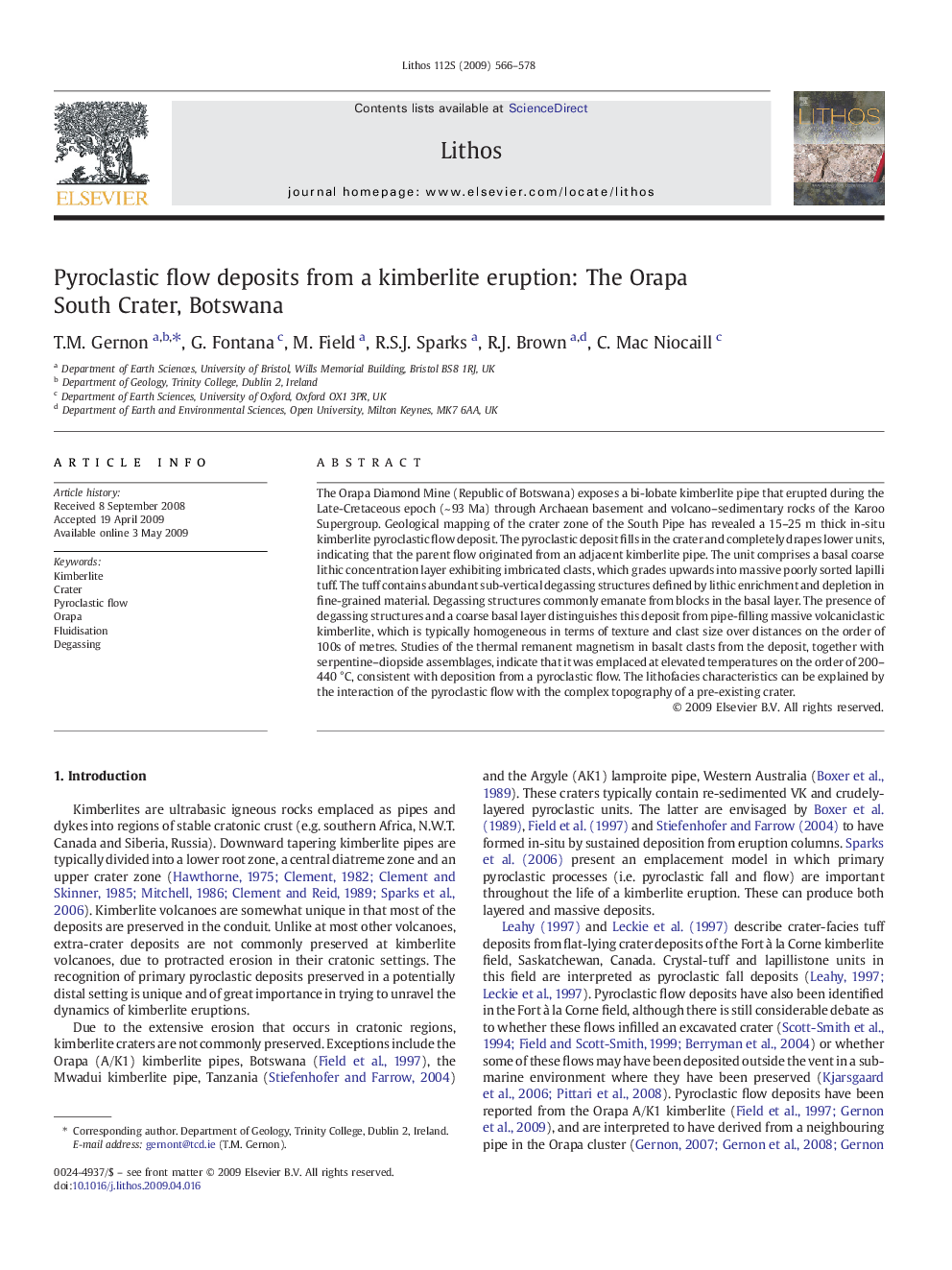| Article ID | Journal | Published Year | Pages | File Type |
|---|---|---|---|---|
| 4717291 | Lithos | 2009 | 13 Pages |
Abstract
The Orapa Diamond Mine (Republic of Botswana) exposes a bi-lobate kimberlite pipe that erupted during the Late-Cretaceous epoch (~ 93 Ma) through Archaean basement and volcano-sedimentary rocks of the Karoo Supergroup. Geological mapping of the crater zone of the South Pipe has revealed a 15-25 m thick in-situ kimberlite pyroclastic flow deposit. The pyroclastic deposit fills in the crater and completely drapes lower units, indicating that the parent flow originated from an adjacent kimberlite pipe. The unit comprises a basal coarse lithic concentration layer exhibiting imbricated clasts, which grades upwards into massive poorly sorted lapilli tuff. The tuff contains abundant sub-vertical degassing structures defined by lithic enrichment and depletion in fine-grained material. Degassing structures commonly emanate from blocks in the basal layer. The presence of degassing structures and a coarse basal layer distinguishes this deposit from pipe-filling massive volcaniclastic kimberlite, which is typically homogeneous in terms of texture and clast size over distances on the order of 100s of metres. Studies of the thermal remanent magnetism in basalt clasts from the deposit, together with serpentine-diopside assemblages, indicate that it was emplaced at elevated temperatures on the order of 200-440 °C, consistent with deposition from a pyroclastic flow. The lithofacies characteristics can be explained by the interaction of the pyroclastic flow with the complex topography of a pre-existing crater.
Related Topics
Physical Sciences and Engineering
Earth and Planetary Sciences
Geochemistry and Petrology
Authors
T.M. Gernon, G. Fontana, M. Field, R.S.J. Sparks, R.J. Brown, C. Mac Niocaill,
